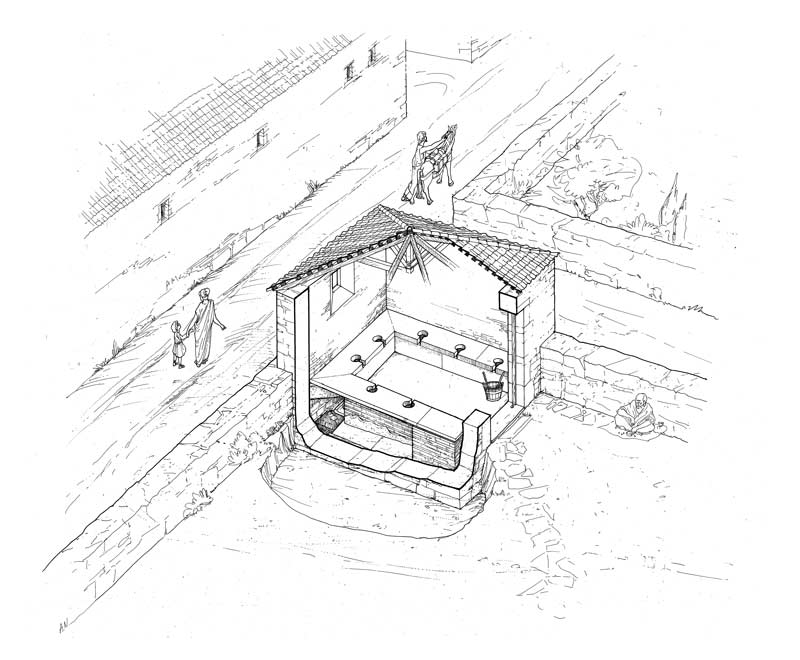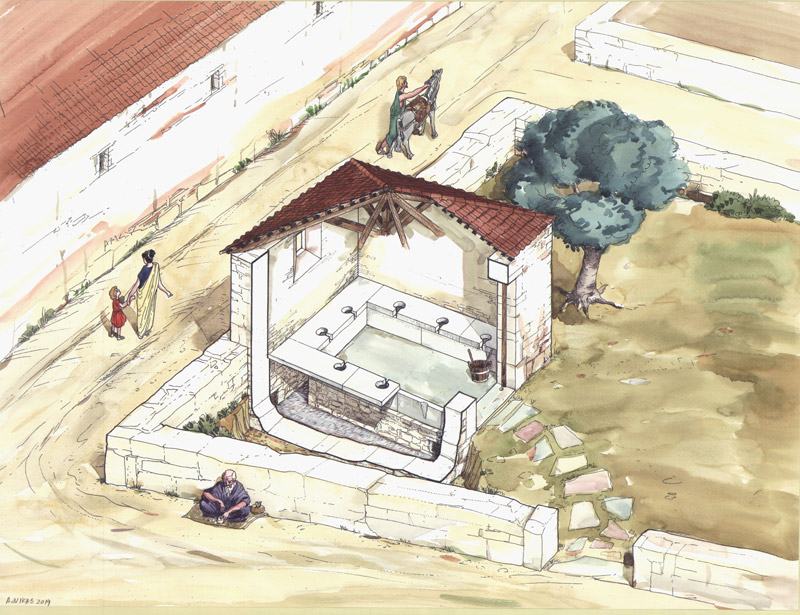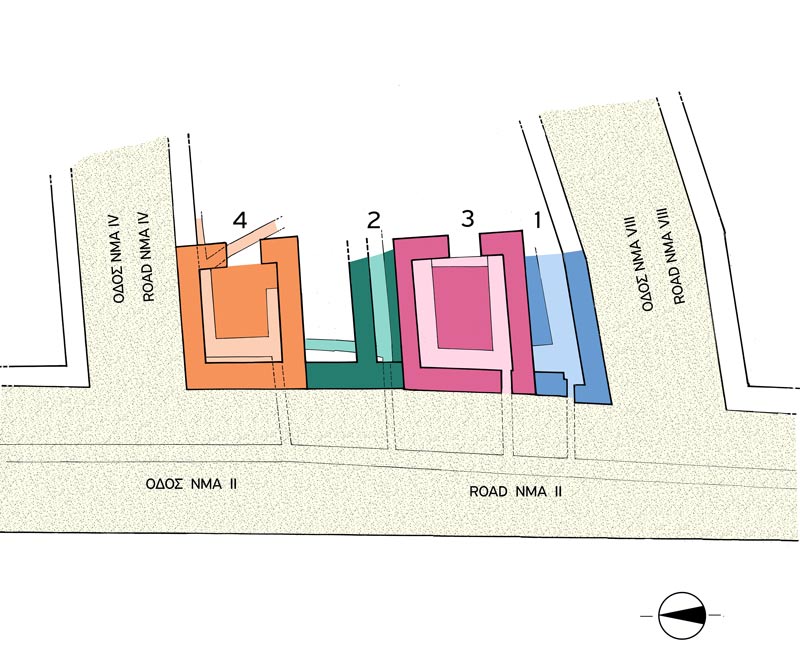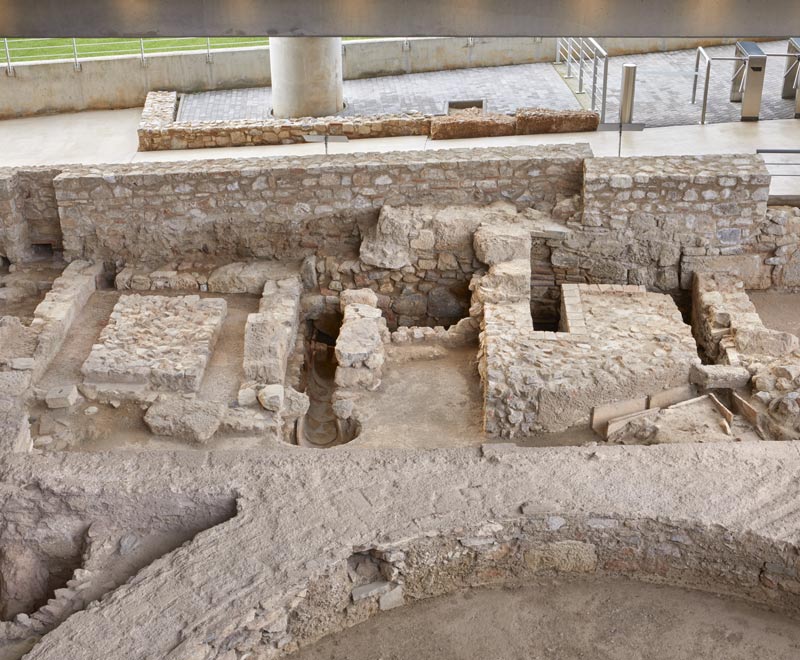THEMATIC SECTION
Public latrines
From the 2nd cent. AD, most houses in the ancient neighbourhood have their own private latrine. However, in an available space between three streets, public latrines are erected, which remain in operation through four successive time periods.
The two best-preserved resemble small rooms and serve seven or eight people at a time. Although the characteristic seats with holes were missing, the trenches surrounding the latrines’ three sides are still preserved. These trenches receive the waste, which, with the help of running water, is flushed into the central sewer running beneath the main street.
These latrines are small-scale versions of the large public ones. The arrangement of the sewer systems is similar, but the public ones served a much larger number of people. Although the simultaneous use of what we perceive as a private space seems strange today, such sharing of space is the norm in antiquity, as moral codes and perceptions of decency or personal privacy differed. The simultaneous use of latrines by both sexes remains a problem, however, which is likely resolved with the establishment of separate hours for both sexes, as was done in the small baths.
The use of your data is described in the privacy settings










